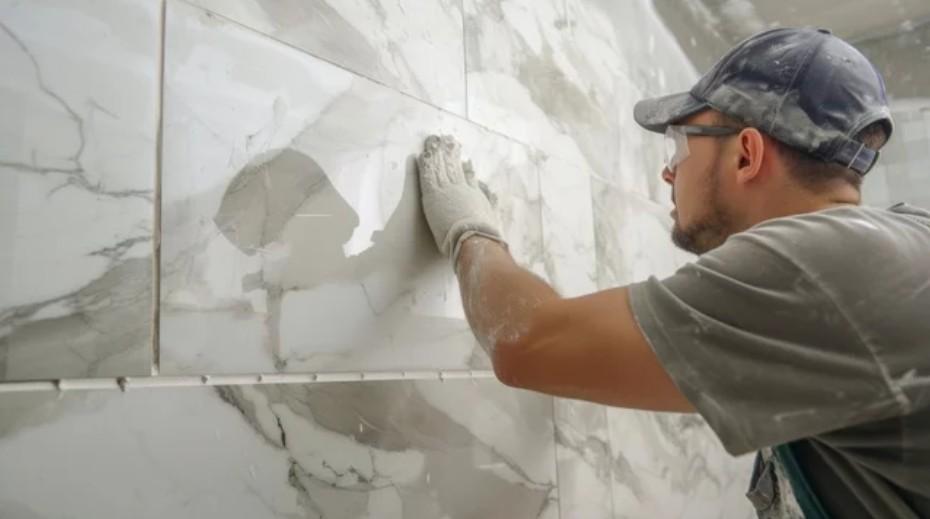Marble is a symbol of elegance, whether it’s the sophisticated luxury marble tiles adorning your floors or a striking large marble slab for wall in your bathroom or living area. Its natural veining and polished finish make it a standout, but marble’s beauty requires careful maintenance to endure. Sensitive to acids, scratches, and moisture, marble demands a thoughtful approach. This guide offers practical, artful strategies to keep your marble surfaces radiant and timeless.
1. Swift Action on Spills
Marble’s porous surface is prone to staining, especially from acidic substances like wine, lemon juice, coffee, or vinegar-based sauces. These can etch the stone, leaving dull marks that diminish its allure.
- What to do: Blot spills immediately with a soft cloth or paper towel. Clean with a damp cloth and dry completely to prevent residue.
- Avoid: Letting spills sit or using cleaners with bleach, ammonia, or vinegar, which can harm the marble’s finish.
2. Clean with Delicate Precision
Using the wrong cleaner can damage marble’s delicate surface, causing etching or discoloration that dulls its shine.
- Recommended: Use pH-neutral stone cleaners or a small amount of mild dish soap diluted in warm water.
- Avoid: Acidic cleaners (lemon, vinegar, or bleach-based) and abrasive tools like scouring pads or powdered scrubs.
- Pro tip: Dry surfaces after cleaning to prevent water spots, especially on luxury marble tiles in high-traffic areas.
3. Keep Dust at Bay
Dust and grit can act like abrasives, gradually wearing down marble’s polished surface, even on a large marble slab for wall where dust settles over time.
- Floors: Sweep or dust mop daily with a soft, dry mop, particularly in busy areas. Avoid dragging furniture or using vacuum attachments that could scratch.
- Walls: Wipe with a dry microfiber cloth weekly to remove dust without harming the finish.
- Why it matters: Regular dusting prevents micro-abrasions that diminish marble’s luster.
4. Seal for Lasting Protection
Sealing is essential, even for polished marble, as it creates a protective barrier that slows stain absorption, giving you time to clean spills.
- Frequency: Reseal every 6-12 months, depending on usage. Test by dripping water on the surface—if it absorbs quickly, reseal.
- Process: Clean the marble thoroughly, apply a stone-safe sealer with a soft cloth, let it sit as directed, and buff off excess.
- Note: Follow the sealer’s instructions carefully for optimal results.
5. Address Etching Promptly
Etching occurs when acids react with marble’s calcium, creating dull, light patches. Common culprits include citrus, vinegar, and some toiletries like toothpaste or shaving cream.
- Solutions: Light etching can be treated with marble polishing powder. Severe cases may require professional refinishing.
- Prevention: Use coasters for drinks, rinse off soap residue, and avoid placing acidic items directly on marble surfaces.
6. Protect with Thoughtful Coverings
While luxury marble tiles look stunning uncovered, rugs can shield high-wear areas from damage.
- Placement: Use rugs in entryways, kitchens, or under furniture to protect against dirt, spills, and scratches.
- Choosing wisely: Select breathable, non-slip rugs without rubber or plastic backings, which can trap moisture or discolor marble.
- Care tip: Rotate rugs periodically to ensure even wear and prevent fading.
7. Care for Bathroom Marble with Vigilance
A large marble slab for wall in a bathroom is exposed to water, soap, and humidity, making it prone to soap scum and water spots.
- Daily routine: Wipe walls with a soft cloth or stone-safe squeegee after showers. Ensure proper ventilation to reduce moisture buildup.
- Sealing: Reseal every 6 months to combat constant water exposure.
- Avoid: Suction cups or metal tools, which can scratch or chip the surface.
8. Schedule Professional Polishing
Even with diligent care, marble’s shine can fade over time. Professional polishing restores its original brilliance.
- What it does: Removes light scratches, etching, and dullness while resealing the surface.
- Frequency: Every 2-4 years for floors; less often for walls or low-traffic areas.
- Benefit: Keeps your marble looking as luxurious as the day it was installed.
9. Use Protective Surfaces
Cutting boards, trays, and coasters are essential for safeguarding marble from damage.
- Why it matters: Cutting directly on marble scratches the stone and dulls knives. Oils, perfumes, or bottles can leave stains or etch marks.
- Solution: Always use protective surfaces for food prep, toiletries, or drinks to minimize direct contact.
10. Inspect Regularly for Issues
Marble can develop subtle problems like cracks, loose grout, or persistent water spots. Routine checks help catch these early.
- What to look for: Chips, uneven shine, or areas where moisture lingers.
- Action: Address minor issues promptly to avoid costly repairs.
Conclusion
Maintaining the timeless beauty of luxury marble tiles or a large marble slab for wall is an art that blends diligence with care. By acting quickly on spills, using gentle cleaners, sealing regularly, and protecting surfaces, you can keep your marble radiant for decades. Treat it with respect, and it will continue to enhance your space with its enduring elegance.



